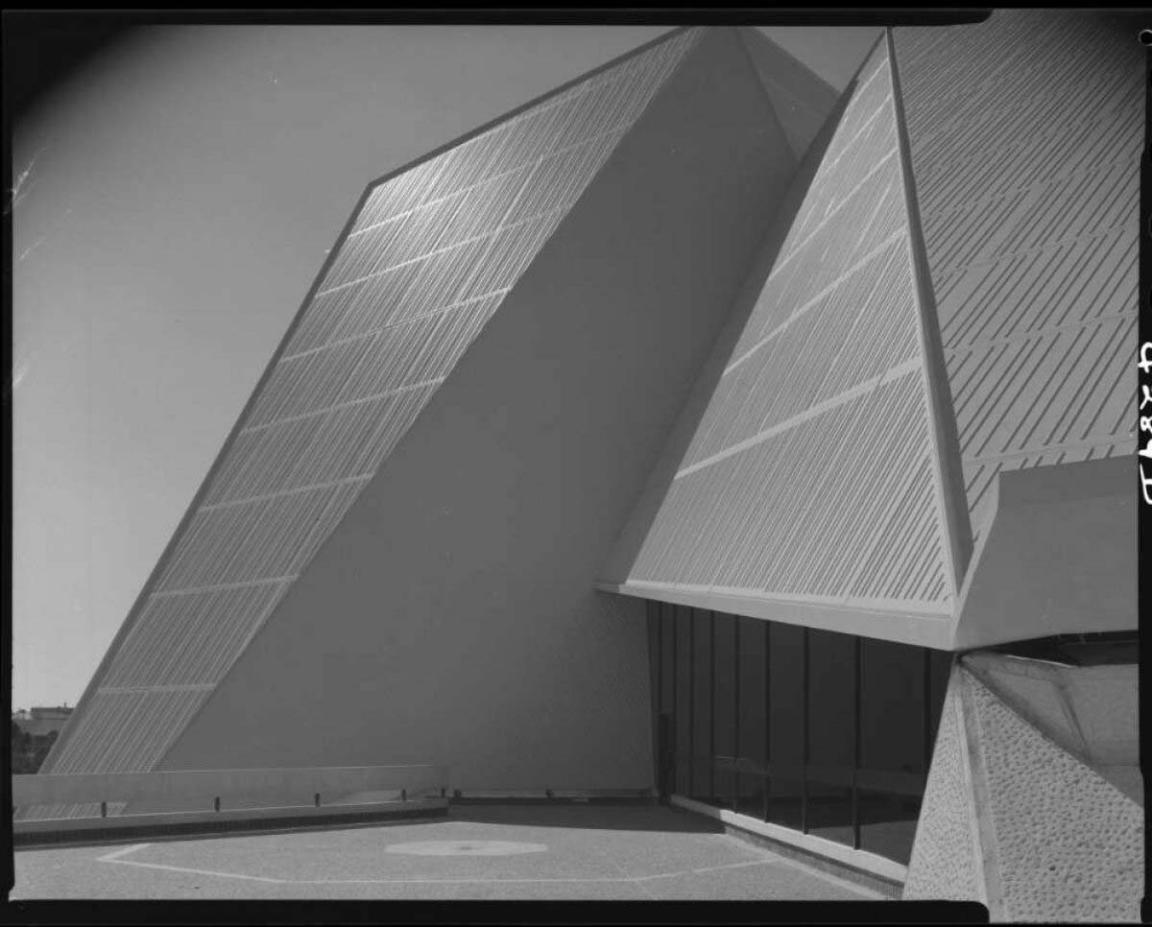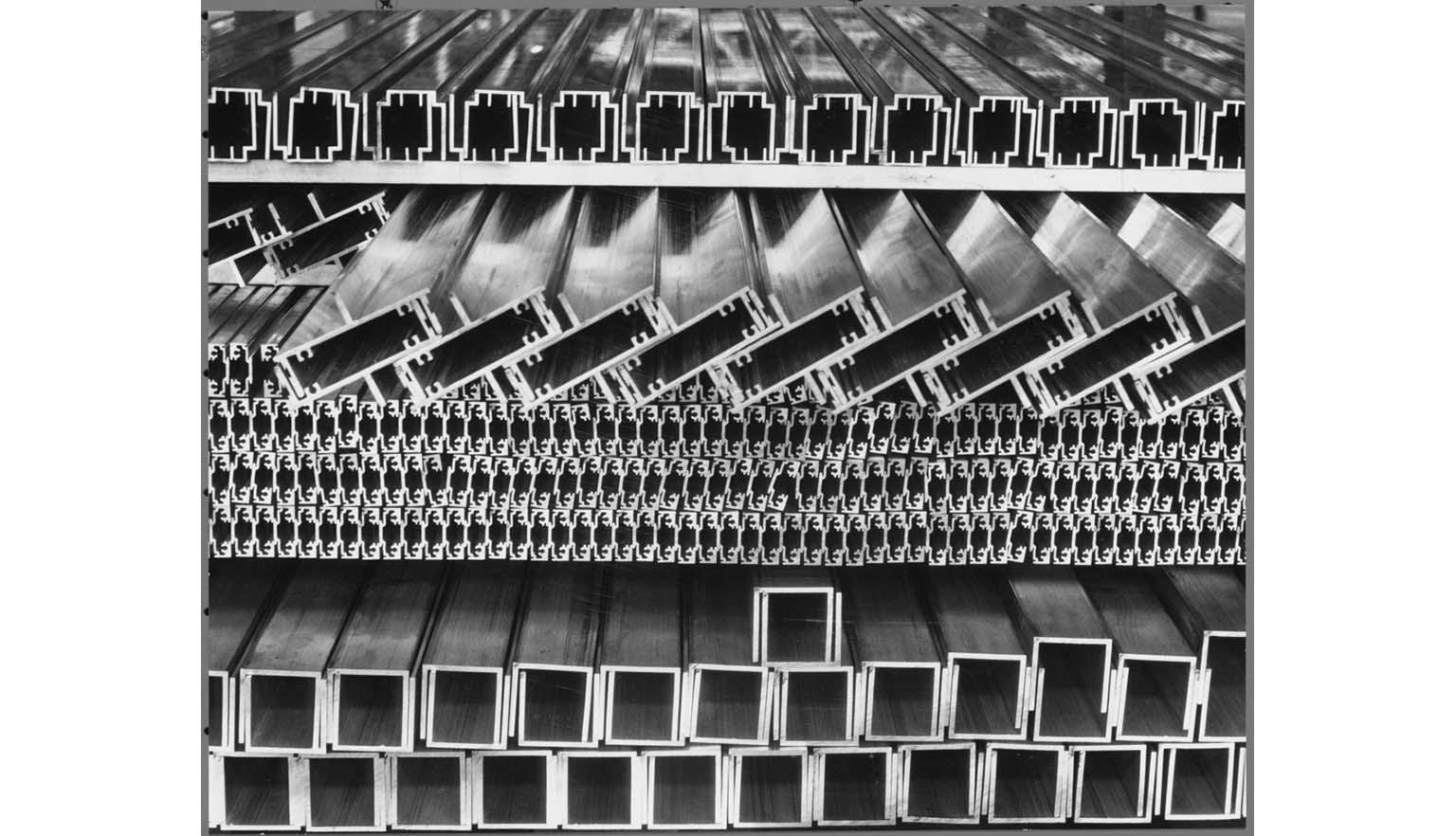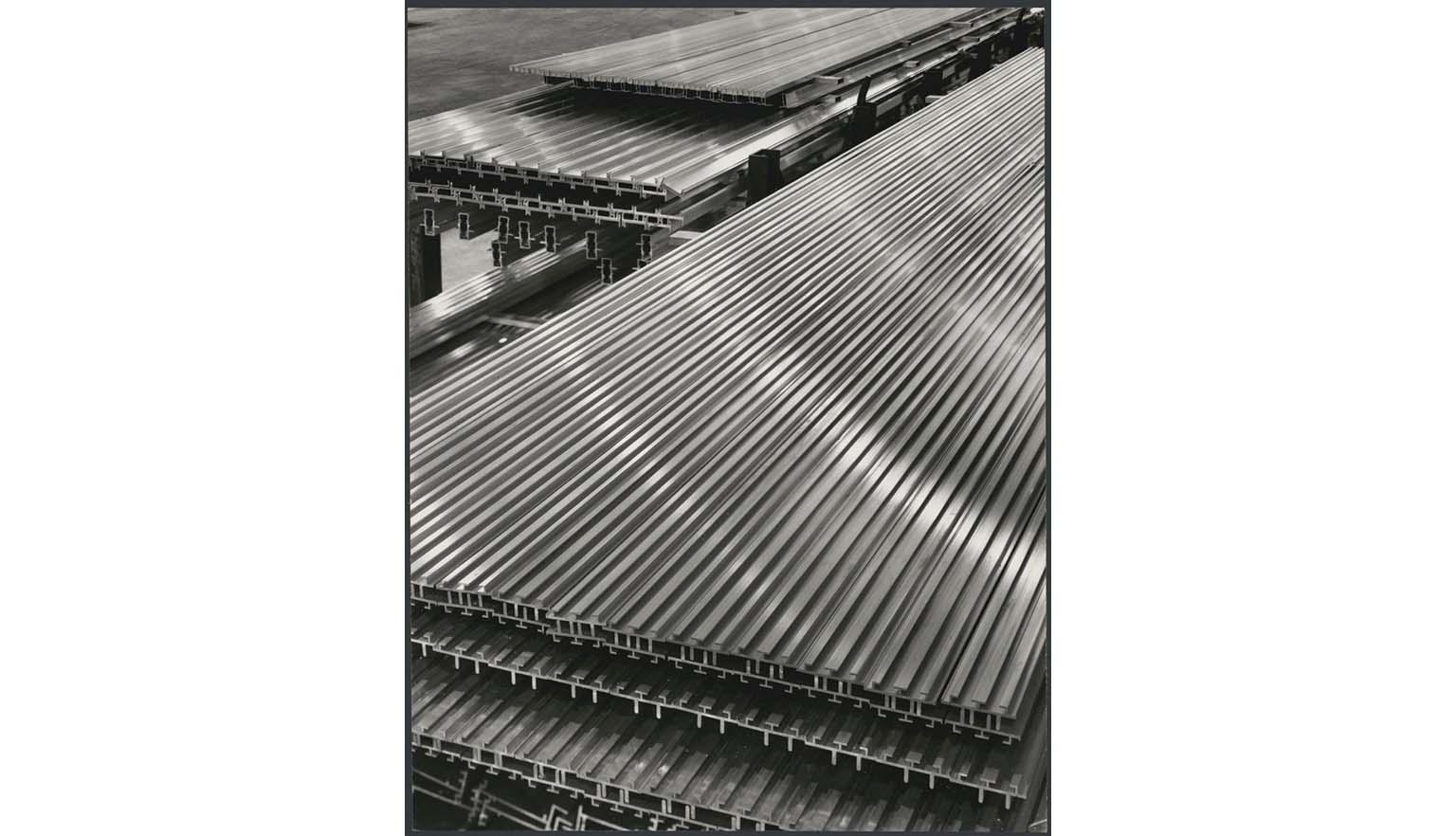Modernism
Modernist design promoted the idea that ‘form should follow function’, which meant rejecting decoration that served no purpose.
This utilitarian approach towards creativity in fields such as architecture and design were influenced, in part, by advances in science, technology, mechanisation and militarism across the globe from the early twentieth century. These advances increased rapidly during the period after the Second World War.

Wolfgang Sievers, Side view of Adelaide theatre complex, 1973, nla.gov.au/nla.obj-160378200
Wolfgang Sievers, Side view of Adelaide theatre complex, 1973, nla.gov.au/nla.obj-160378200
Modernism in Australia
Modernist ideas began appearing in Australia in the mid-1910s. However, they were not widely adopted until after the Second World War. During this time, modernism influenced architecture, photography and other creative fields.
Photographer Wolfgang Sievers played a key role in this movement. His work reflected modernist principles and documented changes in Australian industry and infrastructure.
Photography and modern design
Modernism aimed to represent society through functional and efficient design. In areas like architecture and industry, this often meant minimal ornamentation, simple materials and repeated forms.
Sievers applied these ideas in his photography. His images of industrial subjects often emphasised pattern, repetition and structure—using composition to highlight design and function.
Recording change
Sievers’ work offers a visual record of Australia's industrial growth and changing built environment during the 20th century. His images provide insight into how modernist ideas influenced Australian design and infrastructure.
Learning activities
Activity 1: Words in context
Define the following terms with your class and discuss their relevance to architecture and design:
- Utilitarian
- Modern
- Contemporary
- Innovative
- Aesthetic
- Practical
- Impractical
Activity 2: Style survey
Ask students to compare and contrast a modern building and an older one in your town or suburb. As a class, conduct a survey to see which style students prefer and why. Encourage students to consider materials, design, function and visual appeal.
Activity 3: Form vs. function
Discuss the term ‘form follows function’. What does this mean? Investigate examples in real life. Are there any examples of the opposite?
Activity 4: Aesthetics in infrastructure
Have students consider the design and construction of public infrastructure (sewage plants, power plants, hospitals, etc). If the building’s purpose is to provide a service, should aesthetics and decoration be considered when constructing these buildings?






